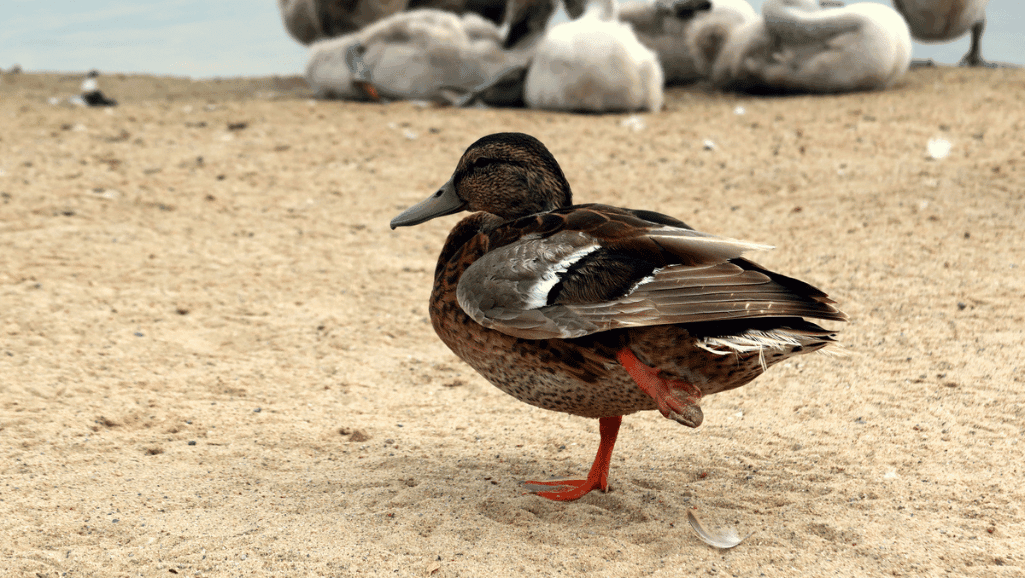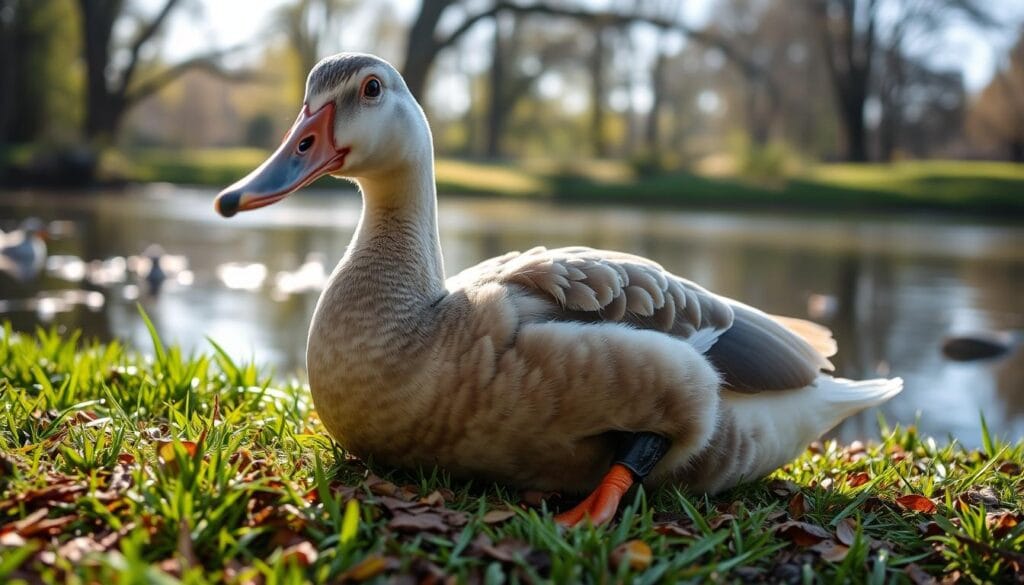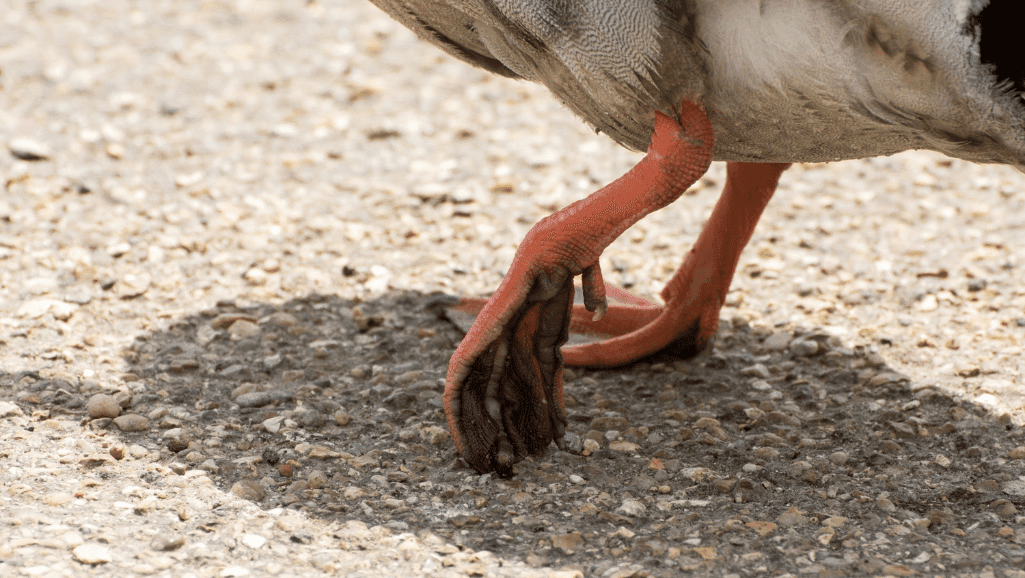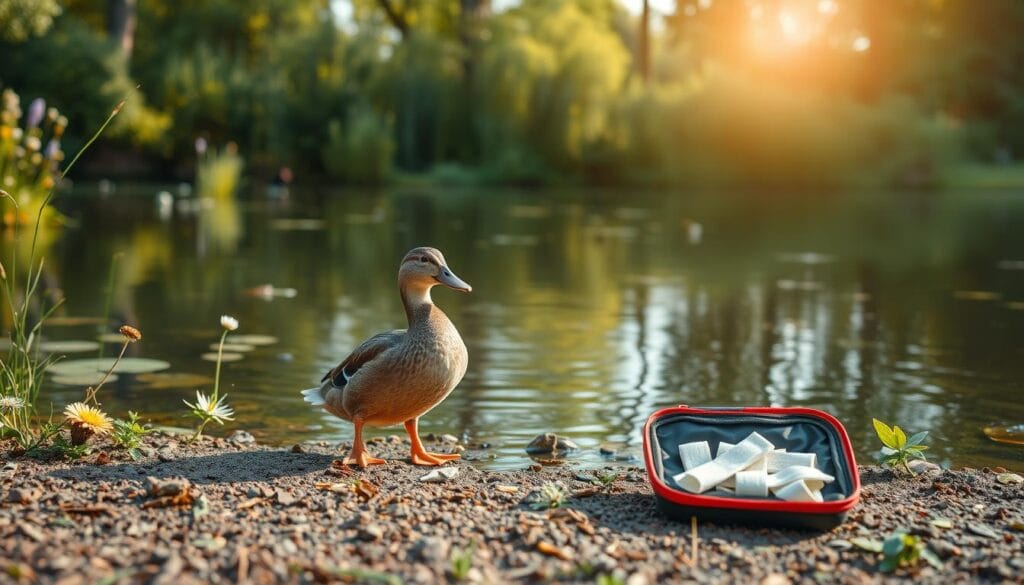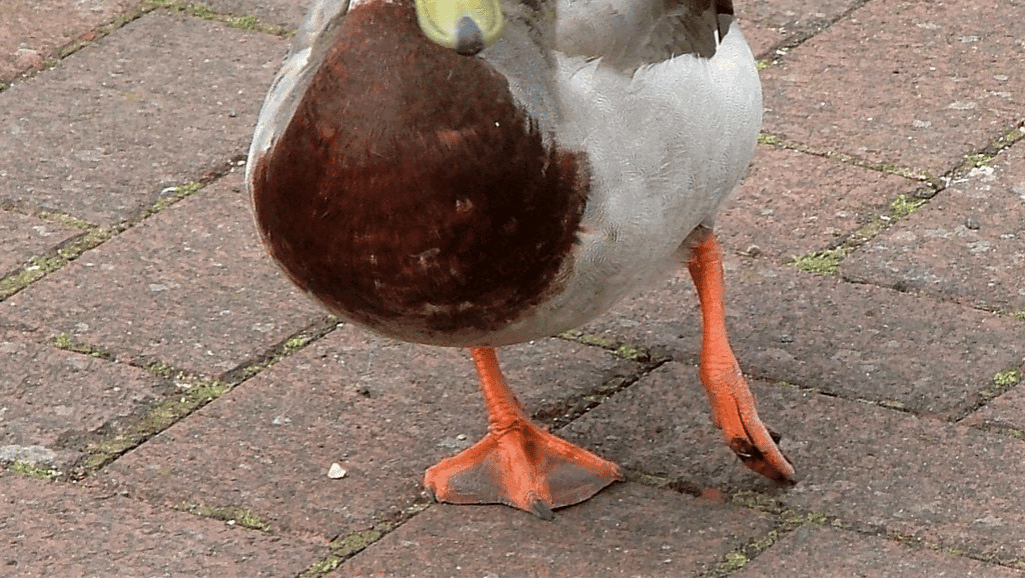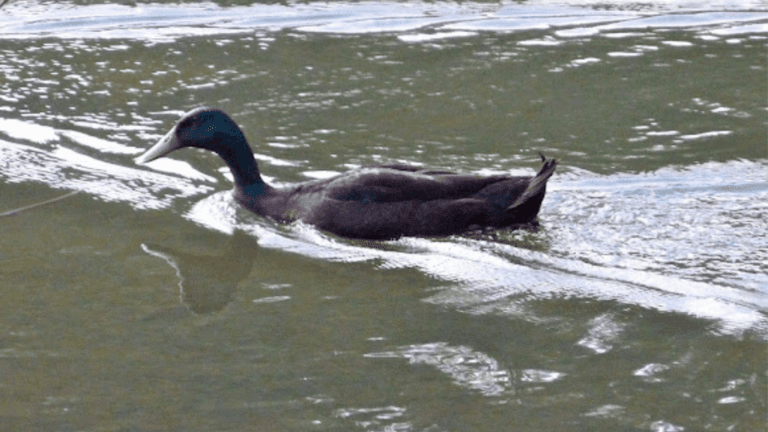Duck limping is a common problem for duck owners. It worries them a lot about their pets’ health. Ducks have weak legs, making them more likely to have mobility issues like limping and injuries. Knowing what causes duck limping and how to treat it is key to caring for these birds.
Lameness is a big problem for ducks. It can be caused by injuries, bumblefoot, or not getting enough niacin. Ducks on wire may get hock injuries. Those on hard ground can get bumblefoot, especially if they’re heavier. Not getting enough niacin from chicken food is another big reason for duck limping.
It’s important to know the signs of duck limping to get help fast. Ducks with limping might not want to move, have swollen hocks, or walk funny. Spotting these signs early helps fix the problem and keeps your duck healthy.
Key Takeaways:
- Lameness is the most common health issue in ducks, often caused by injuries, bumblefoot, and niacin deficiency.
- Ducks brooded on wire or kept on dry, hard-packed ground are more prone to developing hock injuries and bumblefoot, respectively.
- Niacin deficiency, resulting from improper diet, can lead to duck limping and other health issues.
- Symptoms of duck limping include reluctance to walk, swollen hocks, bowed legs, and abnormal gait or posture.
- Early identification and intervention are crucial for successful treatment and management of duck limping.
Common Causes of Duck Limping
Duck limping can stem from injuries, trauma, nutritional gaps, or infections. These problems can affect their legs, feet, and joints. Knowing what causes these issues is key to keeping ducks healthy.
Injuries and Trauma
Ducks often get hurt, especially if they’re not handled right or live near dangers. For example, ducklings might get their hocks stuck in wire, causing serious injuries. Grabbing a duck by its legs instead of its body can also hurt them.
A study found that a twisted ankle can lead to a duck limping badly. This might need a vet’s help to fix.
Bumblefoot
Bumblefoot is an abscess on a duck’s footpad. It happens when ducks walk on hard, dry ground. This can cause their feet to get sore and infected.
In one case, a duck got bumblefoot after almost a year of laying eggs. Changing its diet helped its foot heal in just a week.
Niacin Deficiency
Niacin deficiency is a big reason for duck lameness. It often happens when ducklings eat chicken food that’s not rich enough in niacin. This can hurt their joints and stop them from growing right.
Soft-shelled eggs can mean a duck isn’t getting enough calcium. Ducks need calcium-rich foods like oyster shells or sesame seeds.
Other reasons for duck limping include infections, hip problems, and angel wing deformity. By keeping their environment safe, feeding them well, and getting vet care, we can help ducks stay healthy.
Symptoms of Limping in Ducks
Ducks can show signs of lameness and mobility issues in different ways. It’s important to spot these signs early to treat them quickly. Common signs include not wanting to walk, swollen hocks, and an unusual way of moving.
Reluctance to Walk
A duck not wanting to walk is a big sign of trouble. Pain or discomfort from injuries or poor nutrition can make them avoid using a leg. This is especially true for bumblefoot, where they might limp or use one leg more than the other.
Swollen Hocks and Bowed Legs
Swollen hocks and bowed legs are signs of lameness, often due to niacin deficiency. As it gets worse, the hocks get bigger and the legs bend out. This makes it hard for the duck to walk and balance.
Abnormal Gait and Posture
Ducks with mobility issues move differently. They might walk slowly or unevenly, with a noticeable limp. They might even drag a leg or foot behind them. Ducks with injuries might also stand differently or rest more often.
Studies show that treating duck lameness can cost a lot, depending on the cause and how bad it is. Minor injuries might just need rest and basic care, but serious ones could need antibiotics, supplements, or surgery. On average, owners can spend $50 to $500 or more on vet bills for these issues.
Spotting these symptoms early and getting treatment can help a lot. Watching how your duck moves and acts can help catch problems before they get worse. This way, you can help them feel better and live a better life.
Diagnosing Duck Limping
If a duck limps, it’s important to act fast. Early treatment can stop the problem from getting worse. It also helps the duck live better. To find out why a duck is limping, you need to check its body and diet.
Physical Examination
Checking the duck’s body is key to finding out why it limps. Look for any injuries like cuts or bruises on its legs and feet. Webbed feet can get problems like bumblefoot, which hurts a lot.
According to Majestic Waterfowl, limping can also mean the duck has a bacterial infection.
Look for swelling or redness in the joints. This could mean there’s an infection or inflammation. Move the duck’s legs gently to see if it hurts. Watch how it walks to see how bad the limping is.
Early detection of pressure sores and seeking veterinary care promptly is crucial to prevent infections, especially in heavy breeds like Pekins and ducks with mobility issues.
Assessing Diet and Nutrition
Diet and nutrition are also important for a duck’s legs and feet. Not getting enough nutrients like niacin or biotin can make legs weak. The wrong mix of calcium and phosphorus can also cause problems.
When checking for limping, look at the duck’s food. Make sure it’s getting what it needs. Ask yourself:
- Is the duck’s food balanced and right for it?
- Is there a lack of nutrients causing the limping?
- Is the duck eating something toxic, like lead shot, that could hurt its legs?
By looking at the duck’s food and finding any problems, you can help its health and happiness.
Treatment Options for Duck Limping
When a duck limps, finding the cause is key. Then, you need to treat it right to help the duck get better. The treatment depends on the problem, from simple fixes to vet visits.
Wound Care and Antibiotics
For small injuries, clean the wound well. Use a mild antiseptic and remove any dirt. Apply Neosporin to fight off infection and help it heal.
If it’s a bacterial infection, your vet might prescribe antibiotics. This helps fight the infection and keeps the duck healthy.
Correcting Nutritional Deficiencies
Nutritional issues, like a lack of niacin, can make ducks limp. Give your ducks a balanced diet with all the vitamins and minerals they need. Adding foods like peas or brewer’s yeast can help.
For more advice, check out The Cape Coop’s duck first aid. It has tips on feeding your ducks right.
Environmental Modifications
Make sure your ducks live in a safe place. They need clean, dry bedding and no sharp things. If they have trouble getting in or out of water, use ramps or steps.
Also, give them a shallow, cool place to sit in water. This can help with swelling and pain.
Veterinary Intervention
If your duck keeps limping or home care doesn’t work, see a vet. A vet can find out what’s wrong and create a treatment plan. This might include medicine, surgery, or special therapy.
Going to the vet regularly and following their advice is important. This helps your duck get better and stay healthy.
Knowing how to treat a limping duck can really help them. With the right care, including wound treatment, nutrition, and vet visits, ducks can get better. Early action and caring for your duck’s health are crucial for their happiness.
Conclusion
Duck limping is a big duck health concern that affects a bird’s life quality. Knowing the causes, symptoms, and treatments helps owners care for their ducks better. Early action is key to fix bird gait problems and help them recover.
If your duck is limping, get duck veterinary care right away. Avian vets can find the cause and create a treatment plan. This might include wound care, antibiotics, or even surgery for serious cases. A good vet ensures your duck gets the right care.
To prevent duck mobility issues, keep your duck’s environment clean and safe. Feed them well and check their health often. Knowing about common health problems and acting fast helps your feathered friend’s rehabilitation and keeps them healthy for a long time.


